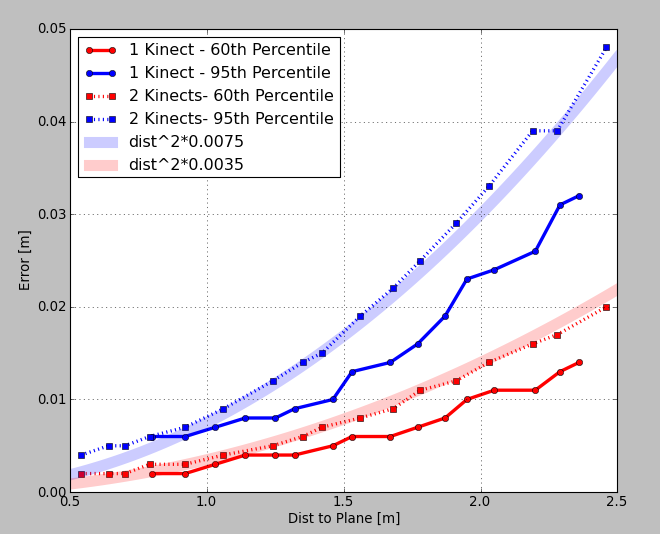This page discusses both the precision and the accuracy of the Kinect sensor. If you are not sure what the difference between precision and accuracy is, check out this Wikipedia page.
Precision of the Kinect sensor
Because the Kinect is essentially a stereo camera, the expected error on its depth measurements is proportional to the distance squared. The experimental data shown in the graph below confirm the expected error model. The graph was obtained by pointing the Kinect at a planar surface, fitting a plane (using RANSAC) through the measured pointcloud, and checking the distance of the points in the pointcloud to that plane. This means the plane represents the average distance measurement, and the graph shows how far off the Kinect measurements are from that average distance.

The raw depth images coming from the Kinect sensor are not rectified. To rectify the Kinect images, you need to calibrate the intrinsic parameters of the Kinect cameras. See the calibration page for more details. When you use the raw (non-rectified) depth images of the Kinect, the precision will be slightly worse than shown in this graph.
Accuracy of the Kinect sensor
The accuracy of a calibrated Kinect sensor turns out to be very high. We compared the Kinect depth image to both (i) a checkerboard pose detected from a calibrated monocular camera, and (ii) a distance measured with a measuring tape. The results obtained show an accuracy of +- 1mm, which is within the accuracy of the two 'ground truth' methods we used.
The accuracy of the Kinect is greatly affected by the intrinsic and extrinsic calibration of the Kinect cameras. An uncalibrated depth image can have a bias of more than 1cm!







